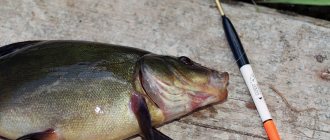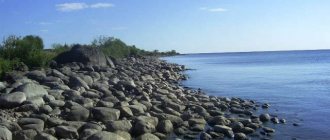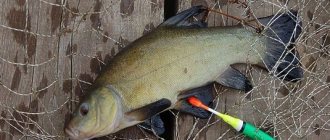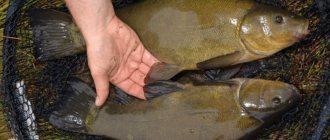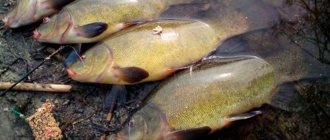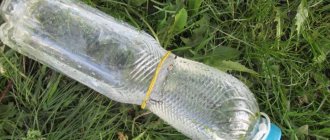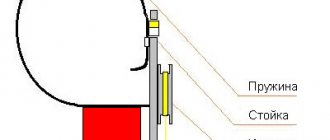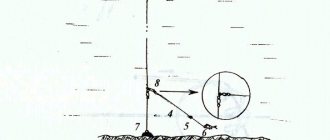Before you go fishing for tench, you should prepare the appropriate tackle and bait, and also decide on the fishing location. It should be remembered that when hunting for this type of fish, you need to think about the need to maintain camouflage, because this very cautious fish cannot be lured to where the fisherman stands openly when the depth of the reservoir is less than two meters.
What places does tench live in?
The most important role when catching fish such as tench is given to the right choice of place. The difficulty in choosing a place arises because this breed of fish never organizes large schools. With the onset of spring, the tench finds a mate, and after spawning, the adults stay apart. Only occasionally do you come across places where small moults peck together, but most likely they gather due to the abundance of feeding.
So where can you look for this fish? Typically, tench stay in muddy backwaters , creeks and bays with abundant algae . If the water on a lake or pond is low-flowing, then these kinds of backwaters are located at a considerable distance from the coastline, and therefore in these cases it is necessary to fish using a boat so that it is possible to cast a float rod under the algae.
Tench can often be found on top of a hard bottom, with a layer of silt. Such soil is often characterized by thickets of horsetail, and tench travel through them, looking for food. Sometimes you can even see the tops of the horsetail swaying as a large fish passes by. Such places are very convenient for fishing.
Also tempting for tench are backwaters and creeks that are completely flooded during river floods and washed by a powerful stream, and after the water mass leaves, they are again transformed into a stagnant area, where new organic substances slowly begin to accumulate. There is always food for tenches: nymphs, small crustaceans, various worms and the like.
The tench's diet consists of animal food; only in the month of June can it eat young shoots of underwater plants. Given the tench's constant digging in the muddy bottom, it can be detected by a series of bubbles that rise to the water surface.
Fishing methods
The most practical way to catch this cautious fish is with the help of a float tackle, which can ensure both the accuracy of casting into an open window on a reservoir overgrown with aquatic vegetation and the noiseless delivery of the bait. Recently, anglers have discovered the possibilities of feeder fishing in areas of open water, which, with certain technical solutions, is no less productive than fishing with a float rod. Further in the text of the article, we will consider these current fishing methods in a more scrupulous layout of the equipment itself and the nuances of its components.
Float fishing rod, tackle set
To hunt for tench, fly rods are used in a telescopic version and made of any material. After all, line fishing is not dynamic, and the weight of the rod does not critically affect the progress of the fishing session. Rods with a length of six meters and above are most suitable for casting behind coastal vegetation. If there are massive fish per kilogram or more in the reservoir, it is advisable to equip the quivertip gear with a feeder, which will help in landing fish. Monofilament fishing line with a diameter of 0.25 to 0.30 mm is used as a cord.

Important! In practice, a spindle-shaped float made of foam or balsa with a short keel and a thin, low antenna with a noticeable boss is most convenient for ambush hunting.
Selected floats weighing from 1 to 3 grams are attached to a blind float using nipple rubber rings. The load of the float is spread on a piece of fishing line of 20–30 cm, starting from placing the largest lead pellets from the float and ending with a small undercut at the very leash of the equipment. Leashes are used from monofilament with a diameter of 0.18-0.20 mm, ending with a crochet hook with a long shank of numbers 8–10.
Feeder tackle, complete set
Feeder gear for catching tench is assembled on a three-meter plug feeder rod with a test weight not exceeding 70 grams. The inertia-free reel is installed with a high traction force and a finely adjustable clutch. The presence of a baitrunner is also welcome. This device will protect the rod from being dragged into the water by large fish, and will give the fisherman the opportunity to be distracted from fishing by other organizational matters that arise during the fishing trip.
Most cords are braided, with a diameter of 0.12-0.15 mm. In still summer waters, green shades of braided fish are most promising. The line feeder uses small mesh feeders made of plastic, which ensures silent casting. Leashes are made from monofilament fishing line, no more than 20 cm long, using hooks number 8.
Equipment for fishing with a feeder rod
A special feature of the feeder equipment is the use of an in-line technique for attaching the feeder, which increases the subtlety of the equipment and is less alarming to timid fish when savoring the bait. The movement of the feeder is limited by silicone stoppers on a section of the line of 50–70 cm.
Important! The use of the smallest possible feeder is due to a purely reduction in the noise level of the feeding equipment, and the fishing itself requires preliminary installation of bait or a powerful starting feed 5–6 hours before the start of fishing.
When does tench bite better?
The difficulty of catching a fish such as tench lies in the fact that it has a secretive lifestyle, does not live in all areas of the bottom surface of the reservoir, its feeding is quite selective, so it is not so easy to hook it. Only an experienced fisherman who has carefully studied the characteristics of the reservoir and the peculiarities of fish habits can catch tench. For this, the availability of suitable weather matters; It is also necessary to have good observation and constantly conduct experiments, changing bait and attachments.
You need to catch this fish during the period of greatest biting activity - in the summer, when tench begins to spawn at a water temperature in the reservoir of about twenty degrees Celsius above zero. Water reaches this temperature in the central part of our country usually by the end of May or the beginning of June.
Having immediately spawned, the tench feels sick for a certain period, and then sharply activates the replenishment of lost caloric reserves, so the peak of the bite can safely be called the period of mid-summer and a little closer to its beginning.
In the month of June, experts consider the optimal time for catching tench to be in the morning, starting from seven o’clock and until about nine. Another period of good biting is the evening hours. At other times, this fish feeds sporadically.
When heading to feed, tench swim, adhering to one route, along the vegetation edge bordering the open area. During the day and night, the fish moves away from the shoreline or swims into dense thickets, and in the evening it approaches the place where the grass begins and moves along the edge in search of feeding.
Let's look at the intricacies of catching tench using specific examples. For example, Lake Pleshcheyevo is quite deep, but there are also shallows densely overgrown with reeds . In those places where young shoots appear near a strip of last year’s grass (such a strip is up to ten to fifteen meters wide), fishermen mow small squares of nickels, connecting them with an artificial path, allowing the fish to follow a given route. The nickel is not mowed down completely, but with some vegetation left behind, as long as it does not interfere with the fishing process. A good option would be if the naturally formed bald spots in the thickets are connected by trampled paths.
The Uglich reservoir has the same features, so the principles of fishing here are the same. However, here, along with tench bites, rudd bites are often observed. At the same time, the yield of rudd is often quite good.
Accompanying bites from other types of fish when fishing for tench are not that uncommon. On the Yauza near the village of Orzhanka, tenches in the month of June stay near the strips of coastal thicket and wander parallel to them, looking for food. If a certain place is good to feed, then in addition to tench, perch, bream, and roach will be taken. To cut off small fish and catch large specimens of tench, the bait should be made more voluminous.
Plant attachments
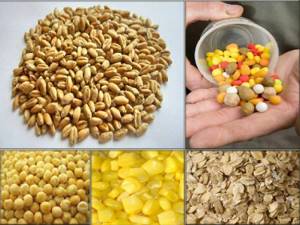
Nozzles of plant origin, frankly speaking, are somewhat inferior compared to baits of animal origin. No one wants to eat simple porridge when there is a meat dish on the table. At the same time, there are plant attachments that show decent results. What can be included here?
An ordinary bread crumb can become a bait for tench. Especially if the bread is flavored. But you should not regard the bread crumb as the main attachment. This is rather a kind of Spartan version!
But if you mix soft bread with sour cottage cheese, you get a really excellent attachment. The fact is that tench really likes sour cottage cheese. The aroma of cottage cheese attracts tench from a long distance. Its action resembles the effect of a magnet.
You can also use various grains when fishing for tench. When going for tench, take a can of canned corn with you. Surely tench will bite on such a bait. If you don’t have corn, you can replace it with peas.
You can also fish with a mastyrka. There are quite a few mastyreks on sale that are designed specifically for catching this bronze fish. But you shouldn’t follow the lead of marketers. Almost any mastyrka is suitable for catching tench, and it doesn’t matter what kind of fish is depicted on the package. Here you need to pay attention to the composition. In addition, the fisherman can not only buy a ready-made mixture, but also prepare it himself.
We recommend reading: Catching perch in the spring with a spinning rod
In some cases, tench are also caught using boilies. A boilie is a special bait that is a ball of boiled dough. Of course, this dough contains more than just plain flour. Quite often, boilie manufacturers even keep the recipe secret. Boilies are more suitable for catching large tench using bottom tackle. A small fish simply cannot swallow a large bait.
Which nozzle to use
In the first half of the summer months after spawning, which is unpretentious to food, tench should be caught using live food. The fish stands near the thickets in a place where insects come out. The larvae of insects such as mosquitoes and caddis flies can be used as bait. A small leech, amphipod, and the like can be successfully used for these purposes.

During this period of time, the fisherman must carefully monitor the processes that occur in the lake or river, and focus on natural baits that are easily accessible to fish, combining them with plant ones. An experienced fisherman always has an assortment of at least three types of baits, both animal and plant.
At the end of June, biting activity drops, so the problem with bait worsens. Catching tench becomes random. At the same time, seasonal experiments bring good results here too. In this case, indicators such as the temperature in the reservoir and its oxygen saturation are of great importance. Of course, the bait used on rivers will be different from lake bait.
Sometimes in a river backwater, where there is a sufficient amount of tench, other fish species actively peck at the worm:
- perches;
- rudd;
- roach.
The situation is similar with bloodworms and maggots. In such situations, it is good to use steamed pearl barley as bait. The pearl barley is attached at the rate of one hook – one (or a couple) grain. In this case, the shank of the hook should be short. The float level is made such that the bait is three to five centimeters above the ground. In this case, the measuring line will probably peck, but the little things will not bother you.
Regarding the use of a worm, you should be careful not to use a store-bought product, since tench have a well-developed sensitivity to odor and artificially bred dendrobene does not always appeal to it. It is best to dig up ordinary earthworms in the ground.
On a river, dam or small lake, to catch tench, you should use a caddis fly as bait, many of whose houses can be found in the thickets of horsetail. At the same time, there may be no bites at all on another bait (bloodworm, maggot, worm, pearl barley). Some anglers have success cutting off small fish using bulk baits such as pickled corn.
Fishing technique and tactics
Regardless of the season, catching tench in autumn, spring and summer can only be done in an ambush way by intensively feeding a promising point. If the angler plans to hunt for tench throughout the entire period of open water, then the best option is to install bait, which is recommended to be changed every two days. Careful movements on the shore and in the boat, as well as camouflage of the fisherman, increase the likelihood of successful fishing. Fish move away from overly fussy anglers even with an attractive bait, and it is almost impossible to catch tench with a fishing rod at short distances with careless, noisy behavior.
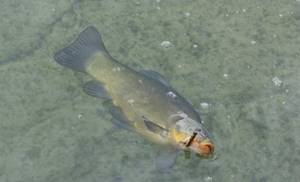
Bite
A feature of tench biting is a long and monotonous bite, during which the fish savors the bait for a long time, which is visually observed as a leisurely swaying of the float almost in one place. Such savoring can last for 15 or even 20 minutes, ultimately ending with the fish quickly retreating to the nearest thickets and, accordingly, pulling all the equipment there.
Important! Any movement of the float to the side is a signal of cutting, which is carried out in the opposite direction to the movement of the float.
Otherwise, the fish, having gone into dense thicket, will force the equipment to break. Regardless of the type of bait, line bites proceed in the same pattern of the events described above.
Fishing
A powerful and stubborn tench is distinguished by a complex process of retrieving. Difficulties in the final stage of catching a trophy are also added by the cramped fishing conditions, which is facilitated by the abundant thicket around the fishing points. By constant tension of the cord, the fish is not allowed to go into the vegetation and, gradually tiring, they try to pull it to the shore or boat and bring it into the landing net. The strength of the fish’s resistance can be judged by comparing the capture of a three-kilogram carp with a half-kilogram tench, which is felt absolutely identical to the angler in terms of the strength of the struggle.
Making bait
To successfully catch tench, you should spend more time cultivating it, using the appropriate types of feeding. Practical experience shows that for this it is good to use a chopped worm, mixing ordinary soil with it.
If the fish gets used to the food provided, it will begin to regularly reach this place in the evenings from everywhere from distant points of the reservoir. Due to the fact that fish are usually concentrated in a decent amount at the feeding site, the tench begins feeding with very great activity, not allowing small fish to feed.
One-day bait for tench should be dosed correctly. There is no point in using components in large quantities. Small fish come to multi-component feeding, which can alert the tench and it will stop biting.
In Russian dry bait, for example, “Traper”, you should add a little earth to give the food a natural feel. It is not advisable to use foreign baits - they contain flavorings, and this can scare away the fish.
Homemade bait recipe
Homemade bait is made as follows. Sifted soil is added to the soaked rye bread.
Here is the recipe for the mixture we tested:
- eighty percent of the shore land;
- seven percent rye bread, roasted in the oven and ground in a meat grinder;
- seven percent rolled oats, roasted and ground with a coffee grinder;
- seven percent roasted and ground seeds, hemp or cake.
Bait for tench
To count on a tench bite, you need to attach it to the fishing point.
This rule is true at all times of the year, except spring, when tench can bite perfectly even without bait. Tench is not a schooling fish, so you should not count on the approach of a whole school of tench. Tench turns out to be a very finicky fish and it can take a long time to find the key to it. Each body of water with its own individual food supply leaves its mark on the gastronomic preferences of tench. Tench bait includes the following components:
- Peas;
- Hercules porridge;
- Millet porridge;
- Sunflower cake.
Tench prefers animal baits such as worms, maggots and bloodworms . All these components are added to the bait for tench. Before this, they must first be crushed. To do this, you can use special triple scissors.
cottage cheese is a long-proven bait for tench . Lin is a lover of animal proteins and really likes cottage cheese. Therefore, if tench becomes the target of an angler, he should definitely try this fermented milk product. To catch tench, prepared cottage cheese is used; it can be tinted with peat so that it blends better with the ground.
bread is also used for bait . The bread crumb is soaked in water from a pond for several minutes. Then the softened core is kneaded and mixed with soil.
Another way to lure tench is to place a fresh lump of turf soil in the fishing area. Such land must be filled with worms. This bait is made a day or more before fishing. Appetizing worms attract tench to a given place, and for a few more days it can return to the same point in search of goodies.
To lure tench to the fishing site, you need to give the bait a suitable attractive smell. Natural flavors do an excellent job of this. However, it is possible to use artificial attractants.

Scents that attract tench:
- Caraway;
- Coriander;
- Garlic;
- Hemp;
- Cocoa.
These seeds or grains must be roasted and then ground in a coffee grinder. Garlic can be grated or squeezed onto the garlic press. It is important that the attractant is fresh.
This also applies to all other components of the bait. Although tench search for food in silt deposits, they are easily spooked by some kind of putrid odor or the smell of mold. Such bait will not only not attract tench, but can also scare it away.
You can use carp baits from store-bought baits, but there are also ones specialized for tench, but they are not as effective as homemade ones.
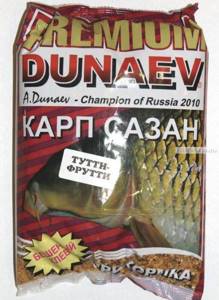
Dunaev carp, carp
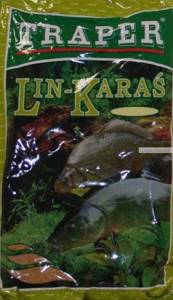
Tench-Crucian carp from Traper
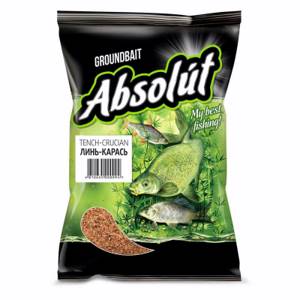
What is the best way to catch tench?
Tench on a float rod
When using a float rod, the nozzle is positioned just above the mud level. If bait is not used, then the half-water fishing method is used.
When fishing for tench, they use tackle like the Bolognese, which has light rigging. The weight of the float should be 1.5-2 grams, its keel should be short and elongated, because they fish for tench at a depth of 1-2.5 meters. The water surface is usually calm. The float should lie silently on the water. You can use a foam spindle float model.
For the load, a system of two pellets is used. One is installed at a distance of thirty centimeters from the leash, the second is secured next to the leash. As a result, the bait floats downwards and will be noticed by the fish faster. The size of the hook should be equal to the nozzle.
To get the right tackle, read the guide on how to properly equip a float rod yourself.
You can get acquainted with catching tench with a float through a video that describes what kind of bait this fish actively bites on and what to use as bait.
FISHING TENCH: TACKLE, LURE, BAIT, TACTICS FOR FISHING TENCH
FISHING TENCH - SECRETS OF FISHING TENCH
From understatement, as we know, myths are born that wander from year to year, from fisherman to fisherman, surrounding tench with an even greater aura of mystery. At the same time, if you know some basic principles, catching tench is not much different from catching the same carp, crucian carp and even roach.
Where to catch tench? Perhaps, for a beginner who decides to take up tench fishing, this is the most difficult question. Difficult because this is where the most conjectures and incorrect judgments occur. Very often I hear that tench and crucian carp are closest neighbors who live in the same reservoirs. It's not like that at all. Yes, in some cases, tench and crucian carp get along well in the same house, but the requirements for both water quality and the nature of the bottom for these fish are very different. Let's start with the common points. The reservoirs where both tench and crucian carp are most often found are lakes, “puddles” and river oxbows, which are united by one common feature: they are all small and therefore heavily overgrown with grass in the summer. In principle, this is where the similarities end.
Where to catch tench
A sure sign that tench rather than crucian carp will predominate in a reservoir is the presence of hard areas of the bottom there. Unlike crucian carp, tench avoid heavily silted reservoirs and can remain in them only temporarily, until the next flood. Another significant difference in the behavior of these fish is their seasonal commitment to certain areas of the reservoir. For most of the year, crucian carp live in the same places - fairly deep waterings, and go aground only during the spawning period. Lin behaves completely differently. From the moment the ice melts until spawning, which in our area occurs in the third ten days of May, tench will stay near the boundaries of aquatic vegetation near the deepest parts of the reservoir. And in the summer you need to look for it in the shallows in the thick of the grass.
To get to the fish, many anglers even mow down areas of the bottom. In the summer, I had the opportunity to catch kilogram tench at a depth of only 50 - 70 cm. However, before I talk about the tactics of catching tench, I will describe some technical points regarding equipment.
Tench fishing gear
Tench is a strong fish, and you need to take the choice of gear for catching it very seriously. I was convinced from my own experience that telescopic rods are completely unsuitable for this. Once, during one fishing trip, I managed to break two first-class fly rods, with which I caught more than a dozen ides and breams. Excessive length turned out to be fatal for these rods. The tench fights for its life with a special stubbornness inherent only to it. And sometimes it is not possible to “tear” the fish from the bottom until the very bow of the landing net. The rods broke at the very last moment of fishing, when the blank was already behind the back, and the fish did not want to come to the surface. So try to get a high-quality and powerful match rod. I use a 3.3m rod with a 20g rig.
Tench fishing rod
For me this is the ideal option. It is not necessary to cast the rig far when fishing for tench, and it is much easier to manage in a confined space with such a short rod. And the two-part division of the form significantly adds power to it. There are several requirements for reels for line tackle: a soft brake and good traction qualities. I like reels where line reeling speed is achieved by increasing the diameter of the spool while maintaining a low gear ratio. Tench, I repeat, is a strong fish - and the reel must have a sufficient power reserve. However, many models of reels with a wide spool have one significant drawback - significant weight. I fish with a reel that has a low (4.5:1) gear ratio and a wide spool; this reel weighs only 230 g. This is achieved by perforating the spool. Moreover, dirt and debris get packed into such a spool in the same way as in a regular, non-perforated one, but it is better visible, and the spool is much easier to clean. It is very convenient to have with you several reliable stands on which you can place your fishing rod and mount a table for baits and other fishing items.
Float mount
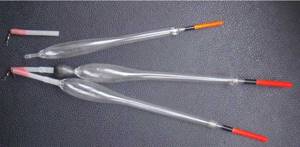
When fishing for tench, I only use floats with one attachment point. And the point here is not so much that such floats register a bite very beautifully. They are much easier to tear out from the thickets if you almost missed the cast or the fish dragged the rig into the grass. Wagglers with a loading scheme of 3+1, 5+1 have proven themselves better than others. The only drawback of these floats is their considerable length.
Floats for catching tench
When fishing at shallow depths, this creates some difficulties in working with the tackle: when the length of the fishing line hanging below the float approaches its own length, the equipment begins to overlap. For such cases, I have several transparent floats in my arsenal. Having their own weight of 4.5 g, these floats fly well, and the loading weight of 0.5 g allows you to very delicately feed the bait “down” over the grass carpet.
Line and hooks
There is also no need to be modest with the thickness of the main line. Tench and fine tackle are incompatible concepts. In the grass, the fish is not very afraid of a thick fishing line - and takes the bait confidently. But stopping the tench after hooking and preventing it from getting into the grass is unlikely to be possible with thin tackle. The main line on my line fishing rods is a fishing line with a diameter of 0.2 mm (3.8 kg), and a leader with a diameter of 0.16 mm. After all, the compatibility of lines in equipment is a very important issue. Line and hooks for catching tench. In real conditions, each type of fishing line behaves differently. And so that it doesn’t happen that the leash suddenly turns out to be stronger than the main fishing line, I try to select fishing lines of the same type for my gear. The qualities of the above fishing line suit me quite well. Soft, gray-green in color, with a low stretch coefficient, good wear resistance and knot strength, it has never let me down when fishing for grass tench. But the conditions for fishing in the “windows” of grass cannot be called simple. The leash for catching tench should definitely be short. I use leashes no longer than 15 cm. This choice is not accidental.
The tench swallows the bait slowly - and often just stands in one place. With a long leash, such a bite may not be noticed. And when fishing in a limited space, a long leash is not the best choice - the fish gets additional freedom, and as a result, the fishing process most often ends with a hook.
The choice of hooks for catching tench also needs to be approached very responsibly. A lip hook is extremely rare. More often, the fish is caught in the soft tissue of the palate, so you need a powerful hook. The hook number is 12 or 14 according to Western European classification.
Bait for catching tench
I did not notice any attachment of tench to any particular smell of bait, but it is impossible to do without properly organized feeding. In order for the fish to quickly discover the hooked bait in the grass thickets, there should be a constant movement of slowly sinking food particles in the fishing area. And even though juvenile roach and rudd will probably be in the first rows at the hook, their fuss with the bait will not go unnoticed - and after a while the tench will also begin to be interested in the bait. So, when I need to raise a tench from a thicket of grass, I always use the tactic of continuous feeding. There are several points in this tactic that I would like to focus on. Tench, although voracious, never forms large flocks. So there should not be too much bait. In order not to overfeed the fish, I completely abandoned massive starting feeding and proceeded according to the following scheme: 3 - 4 not very compressed balls of bait the size of a large plum at the very beginning of fishing and constant supplementary feeding with small doses of bait during the fishing process. Sometimes, when the tench become very active, I switch to feeding with clean maggots or chopped worms. It is convenient to serve this delicacy to fish using a small slingshot.
Lin has poor eyesight, but his sense of smell is very good. Therefore, my bait always contains a large number of casters, chopped worms and live maggots. All of these live additives emit a strong, not very pleasant odor. However, the tench really likes this smell. He begins to look for its source in the grass - and stumbles upon a bait falling in the water column. Sometimes, when the required amount of the above ingredients cannot be found, I add crushed snails to the prepared complementary food. For tench, snails are a natural delicacy - and it would be foolish not to take advantage of this weakness. But when adding snails to the bait, you should remember that they contain a large amount of liquid, which means the initial mixture should be somewhat dry. And in general, you shouldn’t moisten the bait too much. The main thing is that it molds into balls, and when it hits the water, such a ball would break into pieces. When choosing a basis for bait, you should remember that the main element that attracts tench should remain living components. And so I advise you to pay attention to inexpensive, weakly flavored dry mixes. Another nuance: dead maggots in bait are much more effective than live ones. Immobile larvae remain on top of the grass longer, and they are not very fond of small things.
Lures for tench fishing Tench baits
Tench is omnivorous. However, the lion's share of its diet consists of snails, leeches, worms and insect larvae. Based on this, I also selected a set of the most commonly used baits: red-painted maggots, casters, dung worms, semolina dough, canned corn. This fish also readily bites on all kinds of sandwiches: maggot + worm, maggot + caster, worm + corn. However, in the spring, the most catchy bait for me is considered to be red maggot. I don’t know why, but in reservoirs where the bottom is covered with a dense carpet of grass, tench are especially partial to nimble red worms. The worm works better in cases where you have to fish near thickets of water lilies. But semolina, corn and all kinds of “sandwiches” are jokers that can work at the most unexpected moment. So when I go fishing, I always carry a whole set of baits with me.
Favorable weather for tench fishing
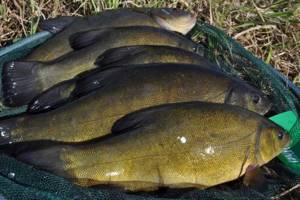
Tench is a thermophilic fish. So for most of the year, you need to look for meetings with it in places where the sun’s rays hit the water and linger the longest. These are not always just shallow areas of the reservoir - the coastal edges of deeper areas can be even better. The main condition for the tench to choose one or another section of the reservoir for feeding will be a higher water temperature. And the coastal zone will be a completely win-win place for catching tench at any time of the year. Here the tench appears at least twice a day when the sun's rays hit it. Like crucian carp, large tench choose predominantly warm and calm weather for feeding.
There are also good catches on cloudy days with light rain. But this fish does not like cool weather, especially with wind. As for the best time of day, contrary to claims that tench are most active in the evening, even pre-sunset hours, I like to fish in the morning - from the moment when the float antenna becomes visible. At this time, a large tench comes out to feed on the very shallows, where the depth rarely exceeds 70 cm. If you behave quietly on the shore, the bites will continue until approximately 11 o’clock. Then the fish leaves the shallows - and random bites can only be observed when dumping into the pit. But in this case, the tench’s competitor can be roach and bream, which always respond much faster to bait.
Catching tench with a fishing rod Do you ever try to catch tench with a float rod? I am sure that the very first golden beauty caught in this way will give a powerful impetus for further experiments in this very exciting activity.
Fishing for tench in summer - Tench's disposition
The basis of successful fishing, first of all, is an understanding of the nature and habits of the object being fished. To catch a fish (not necessarily the hero of this article), you need to know where to look for it, what time is best to come to the pond, what gastronomic preferences this fish has.
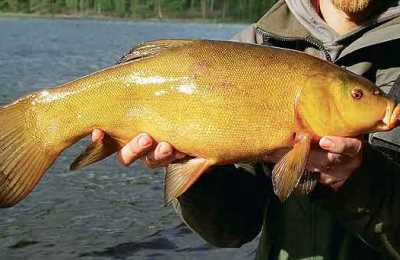
And so, tench... This fish grows quite slowly, but grows to large sizes.
Fishermen's catches include specimens weighing more than 3 kg.
Large tenches lead a solitary lifestyle.
Only sometimes do they gather in small groups of up to 5 individuals (usually less).
Small representatives of this species gather in larger groups, but it still cannot be said that tench is a schooling fish.
That is why you have to wait a very long time for a bite, and the likelihood that after catching the first fish, you will be able to catch several more individuals at once, as often happens when catching other carp fish, is low.
Experienced fishermen know that tench fishing is accompanied by a large number of bites from crucian carp, white bream and silver bream. Beginners may be disappointed by this state of affairs, because they want to catch tench, and not the fish that are caught well on every fishing trip.
Friends, don’t be upset if the bronze beauty doesn’t take your bait for a long time - you just need to wait...
To make the wait meaningful, you need to choose the right place for fishing. Typical tench parking and feeding sites are overgrown shallow water bodies without a current with a silted bottom.

Similar places can be found in oxbow lakes and river bays, but it is best to hunt for tench in ponds and small lakes.
It’s very good if you can find a forest lake with the necessary conditions.
According to my observations, it is in forest lakes that tench are found in abundance, so catching them is very simple.
Tench is a heat-loving fish, so you need to catch it in the summer. In spring and autumn, capture is also possible, but it will most likely be a mere accident. The most effective fishing for tench is in August, more specifically at the beginning of the last summer month.
As for the optimal time of day for fishing, you need to go to the reservoir an hour and a half before dark, since tench activity occurs at night.
In the dark, tench move imposingly in the bottom layer and tear apart the silt in search of food. During the day it does not feed, so it is useless to catch it in the light.
